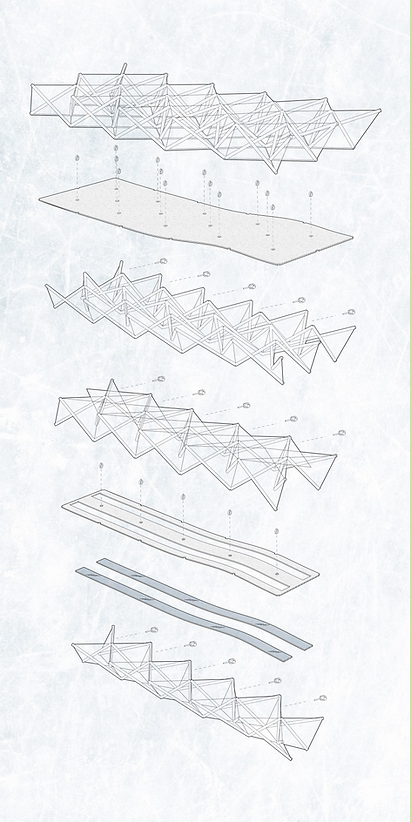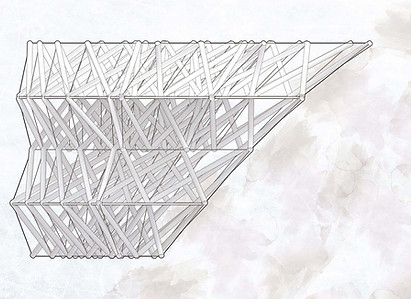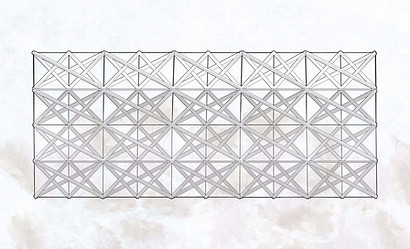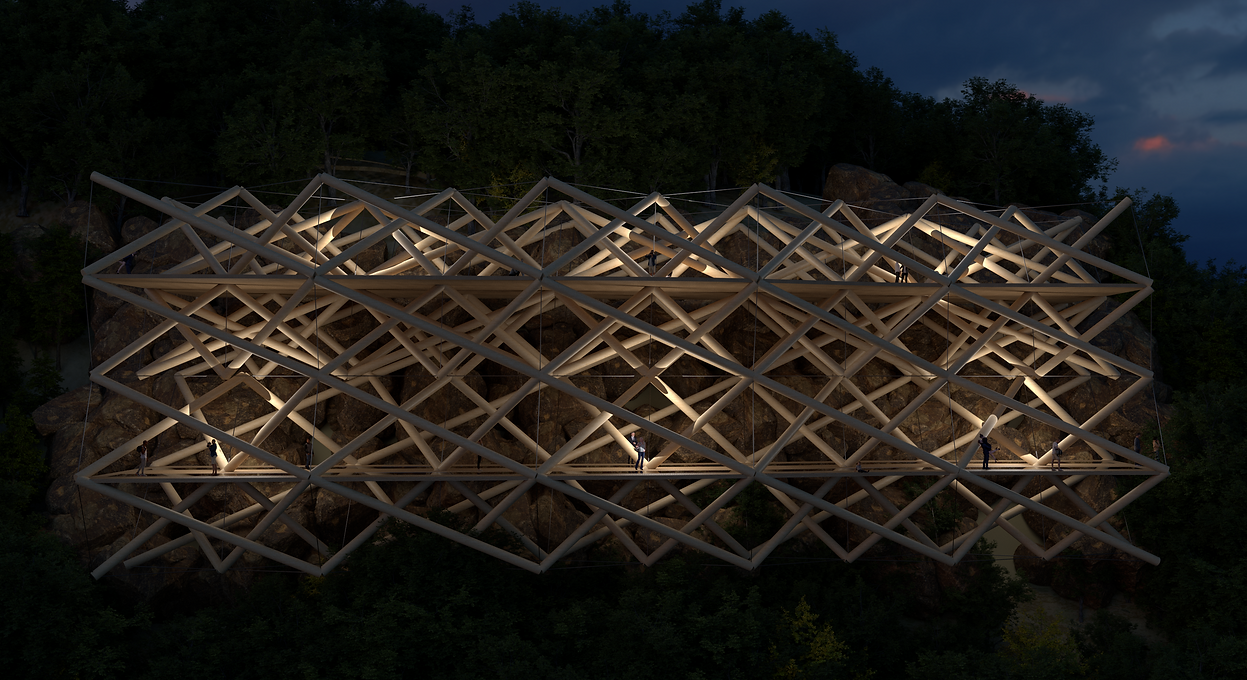Alex Liao
Tensegrity Frame
Architecture + Coding Project
2022 Winter | U of T Architecture Technology Studio 3
Instructor: Nathan Bishop
Site: Dundas Peak, Hamilton - Canada
Tensegrity Frame was a computational design project focused on creating a forward-thinking approach to a sustainable timber-structure system, to be implemented into a real-world design. Drawing inspiration from Gramazio Kohler's Future Tree design, the tensile structure of the Tensegrity Frame was designed based on research on reciprocal frames and properties of tensegrity. Using Grasshopper's Kangaroo plugin, to simulate and refine the structural behavior of the frame, the project underwent prototypes of structural stability both digitally and virtually to test for structural stability, tensile integrity, and adaptability. These iterative prototypes were first visualized in V-Ray, enabling precise evaluation of form and material interactions, then constructed using timber to simulate environmental responsiveness. Ultimately, the Tensegrity Frame exemplifies a new approach to sustainable architecture, merging computational techniques with physical properties to redefine innovative systems.
Case Study
The precedent of the ‘Future Tree’ was the research of Gramazio Kohler's work on reciprocal frames in timber structures,
where the entire design and fabrication were developed as an inseparable and fully digitalized process. The case study
served as an introduction to the fabrication of timber structures by recreating the structure using Grasshopper coding.

Diagram of Reciprocal Frame
Animation detailing the formation of the parametric reciprocal frame
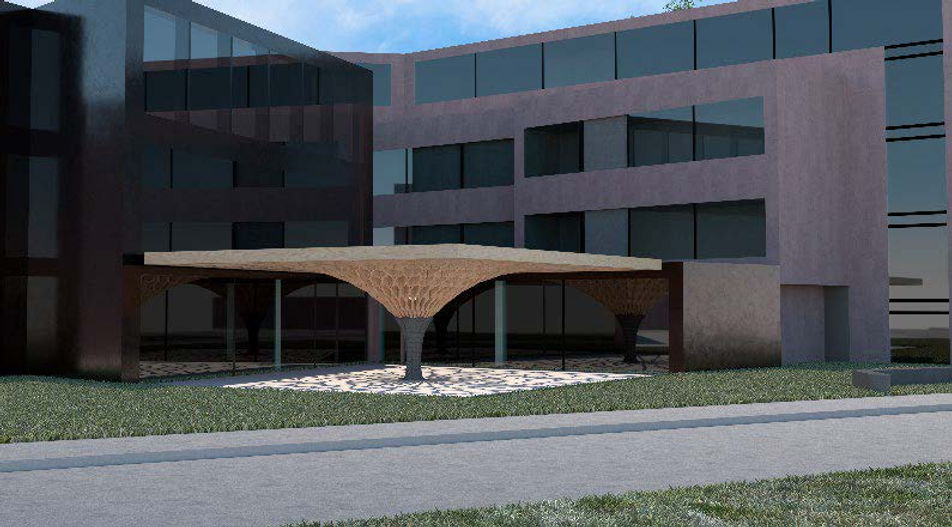
Render of the Future Tree
Prototypes
Research on the Future Tree and the formation of reciprocal frames inspired experimentation with other physics-based design principles which led to the exploration of tensegrity systems and how they could create lightweight, stable, and dynamic timber structures. All prototypes and their stress and strain properties were all simulated using Grasshopper to ensure accurate physics.
Research on the Future Tree and the formation of reciprocal frames inspired experimentation with other physics-based design principles which led to the exploration of tensegrity systems and how they could create lightweight, stable, and dynamic timber structures. All prototypes and their stress and strain properties were all simulated using Grasshopper to ensure accurate physics.
Free Form Tensegrity
Further experimentation with the tensegrity prototypes resulted in selecting the most stable and refined version, which combined features from prototypes 2 and 4. This design utilized two defined surfaces to create a structurally sound tensegrity frame which meant by utilizing any two given surfaces it was capable of creating a free-form tensegrity structure. Through simulations in Grasshopper, this configuration demonstrated superior stability and functionality when needing to be modularized for larger structures.


Visualization of Tensegrity Structure Provided by Two Surfaces
Dundas Peak
Dundas Peak was selected for its stunning views and its significance as a natural heritage destination for the local community and visitors. The site offered an opportunity to create a space to showcase the interaction between architecture and the environment. Positioned directly on the cliff-side, the structure not only maximizes views of the escarpment but also serves as a gathering point that fosters community engagement.
Dundas Peak - Hamilton, Canada
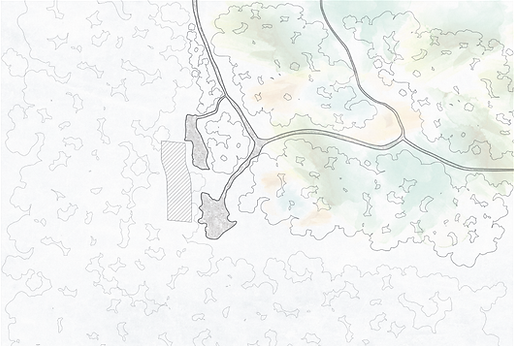
Site Plan at the Dundas Peak Lookout Area
Final Structure

The project transitioned from initial research of reciprocal frames and lightweight structural principles to tensegrity prototypes to adapt flexible free-form designs. The final iteration, optimized by Grasshopper simulations, is a free-form tensegrity system that can adapt to Dundas Peak's dynamic cliff-side setting. It is a balance between structural
stability with an organic aesthetic, to create a natural and organic space.
